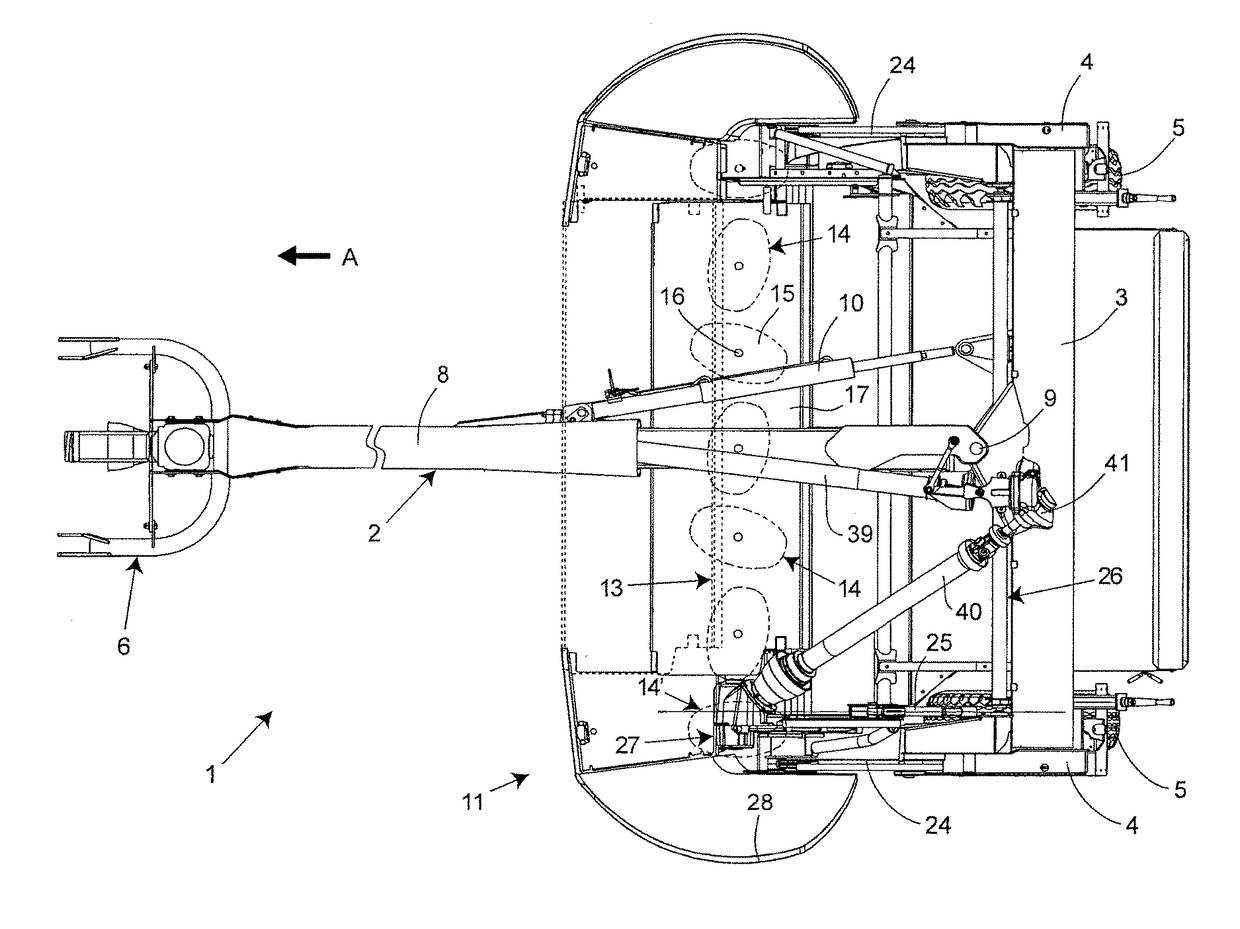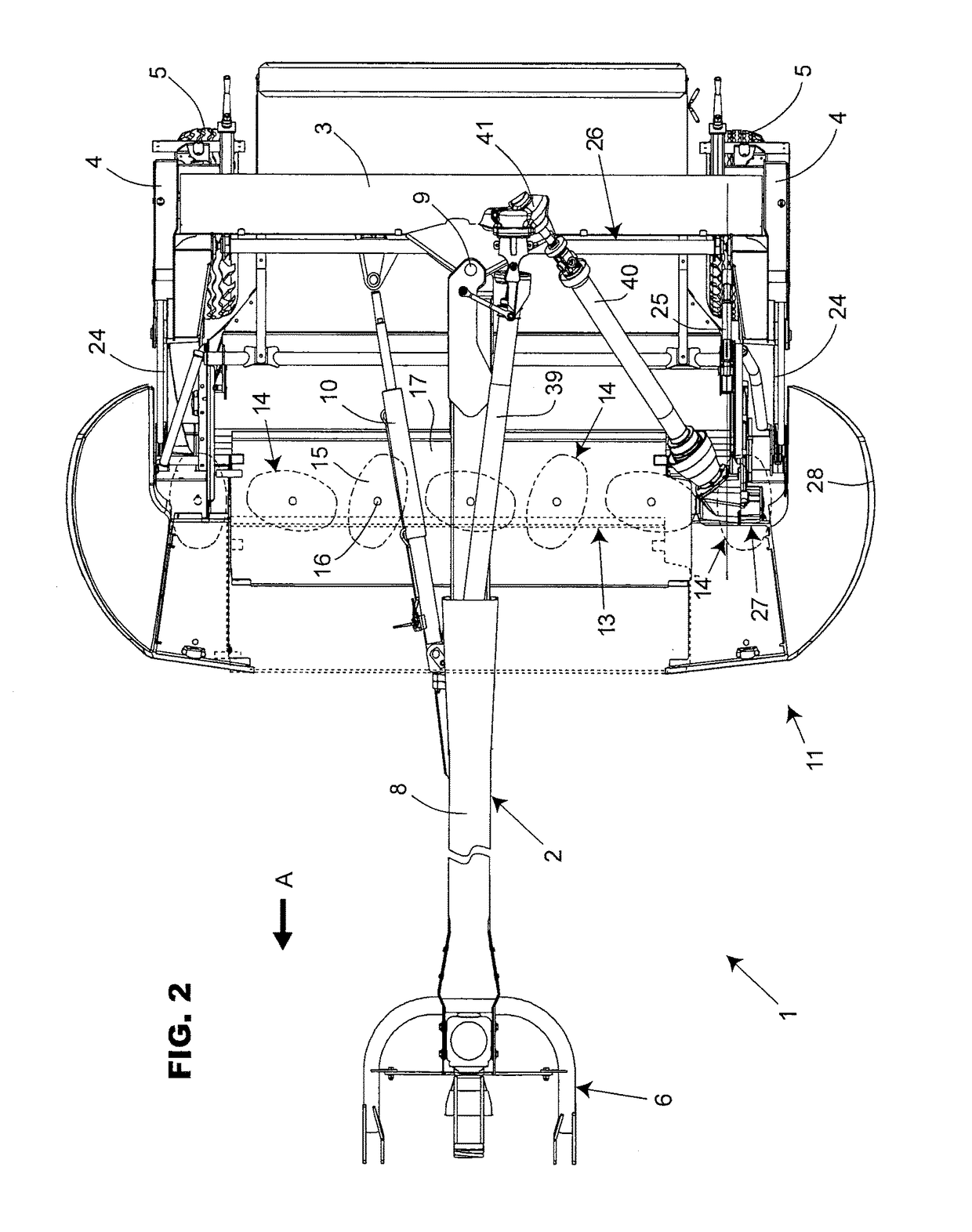Harvesting machine comprising an improved lubrication device
a lubrication device and harvesting machine technology, applied in the field of agricultural machines, can solve the problems of increasing the time that the machine is out of service, increasing and the user's repetitive maintenance operations, so as to improve the efficiency of harvesting and reduce the risk of omitting or neglecting the maintenance of one of the boxes. , the effect of reducing the risk of omitting or neglecting the maintenan
- Summary
- Abstract
- Description
- Claims
- Application Information
AI Technical Summary
Benefits of technology
Problems solved by technology
Method used
Image
Examples
Embodiment Construction
[0042]As is represented in FIGS. 1 and 2, the machine according to the invention is an agricultural machine 1 for the harvesting of plants, in particular of fodder. The machine 1 comprises a chassis 2 having in particular a transverse beam 3. The chassis 2 also comprises two lateral posts 4. Each lateral post 4 is provided with at least one wheel 5 on the ground. The chassis 2 comprises a hitching device 6 allowing the chassis 2 to be hitched to a tractor 7, represented in FIG. 1, for moving the machine 1 in a direction of advance A and for driving the different elements of the machine 1. In the remaining description, the terms “front”, “rear” and “frontal” are defined with reference to this direction of advance A, and the terms “horizontal”, “vertical”, “transverse”, “above”, “top”, “bottom”, “upper”, “lower”, “upwards”, “downwards” and “beneath” relate to the machine 1 in work situation. In the embodiment of the figures, the hitching device 6 is placed at the level of a frontal en...
PUM
 Login to View More
Login to View More Abstract
Description
Claims
Application Information
 Login to View More
Login to View More - R&D
- Intellectual Property
- Life Sciences
- Materials
- Tech Scout
- Unparalleled Data Quality
- Higher Quality Content
- 60% Fewer Hallucinations
Browse by: Latest US Patents, China's latest patents, Technical Efficacy Thesaurus, Application Domain, Technology Topic, Popular Technical Reports.
© 2025 PatSnap. All rights reserved.Legal|Privacy policy|Modern Slavery Act Transparency Statement|Sitemap|About US| Contact US: help@patsnap.com



